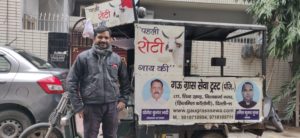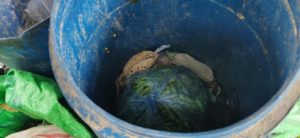
Religion and mythology are intricately knitted with vast folklores across different castes and tribes in Hinduism. Hence, there are various perspectives and reasons for feeding animals. One predominant sentiment is that of “punya”, i.e., virtue. While Hinduism believes in life after death, the key idea behind feeding animals is seen as a means of earning virtue and finding a more elevated life in the next one.
The cow is a sacred animal in Hinduism and is considered as the mother of all animals (gaumata). While cows are worshipped with great devotion in India, feeding them is believed to help overcome the ill effects of the alignment of stars in one’s horoscopes. The practice of feeding “roti”, i.e., grain-based flatbreads, to cows has been an age-old tradition in Hindu customs and the first roti cooked in a household is always kept aside for this purpose. This custom is followed all across the country, from villages to metro cities, irrespective of the ownership of the animal. While rapid urbanization has barely left open spaces for cows to graze, they are now found roaming the streets and mostly eating off of waste disposed on roads or dumping sites.
People, however, continue to be firm on their beliefs and it is common to feed cows on the roadside with roti vegetable/fruit peels and other leftover food. In light of such a scenario, GauGrassSewa, an organisation that collects food for cows with their door-to-door service, has come up with a system to cater to the cow devotees.

The brainchild of a local resident Mr Yogesh Bhati, Gaugrasssewa Trust is a successful self-sustaining organisation and model. They have been active for almost 10 years now around the Shahdara region in Delhi and their structure has changed intensively over time. While the collection of roti by placing drums in front of nearly 1000 mandir was quite a successful model in the initial years, unsegregated food waste resulted in the roti going stale very quickly. By the time the roti would reach the cow from the mandir, it was stale and unfit for consumption. To avoid such massive wastage, a new system was imperative. Under the current system, the operations take place within a 6 km radius approx. in the Jhilmil Colony where Mr Bhati lives. He has 10 Electronic Rickshaws and 2 Pedal Rickshaws that go around for door-to-door roti collection. Each rickshaw caters to nearly 1000 houses in a day to collect roti, specific fruit/vegetable peels, jaggery, dal, atta, chana and mostly food items that are safe for combined collection to avoid rotting over a day. A small membership fee of Rs 100 per month is a part of the service which is voluntary and the total amount helps to support the salary of the rickshaw drivers. On an average, out of 1000 households, at least a 10 are members of the Gaugrasssewa and the responsibility of collecting the fee is upon the rickshaw driver. The direct relation that the households and the drivers share, operationally and monetarily makes the service more transparent and effective. All the food that is collected at the end of the day is taken to the gaushala for nearly 150 cows.


The portion of organic waste produced by an average Indian household in a single day is more than half of its total generated waste. While most households dispose of unsegregated waste, the mixed waste ends up at dumping sites. The mounting waste sites in urban spaces are creating health and environmental issues that need a fix to not let it go out of hand. The informal waste collection systems have been in place for years, finding wealth out of waste.
A fine example of a traditional way of waste collection is that has been in our communities is that of the kabadiwala, an informal waste collector. They traverse on bicycles through residential areas in urban set-ups and provide door to door services by paying for the waste collected. Scrap dealers buy the waste from kabadiwala and utilize it further. If this system can be redesigned and capacity building activities be initiated, then it can become a driver for achieving sustainable waste management. The end cycle of the waste collected at a commonplace can provide an opportunity to monitor and implement a mechanism to make sure that it can regain its maximum potential value. If we think of the value provided by kabadiwala in terms of a job done on bicycles while utilizing minimal resources and recovering the worth of the waste collected then it can play a vital role in mitigating waste-related issues in urban setups or in fact in the distinct setups that are beyond the rural-urban dichotomy.

The ritual of feeding cows with leftover food, vegetable/fruit peels etc. is a fitting example of waste management at the household level to disintegrate organic waste. The habitats for animals are rapidly dwindling with urbanization and systems like Gaugrasssewa are helping animals and cities co-exist. Such systems will not only help devotees practice their rituals but also utilise organic waste to feed animals. Strengthening and redesigning such traditional ways and bringing them back in the system can be beneficial towards attaining sustainable outcomes and another step towards solving the waste problems in the country.

Recent Comments